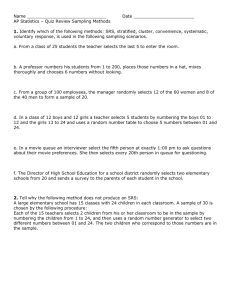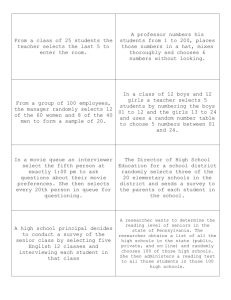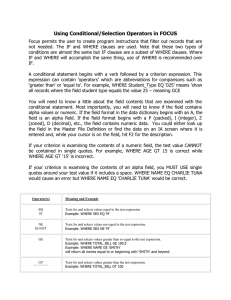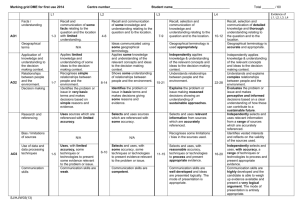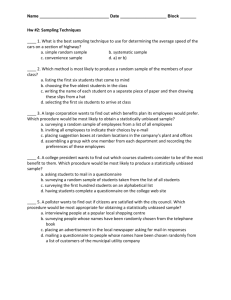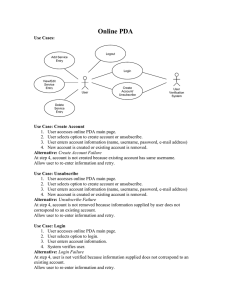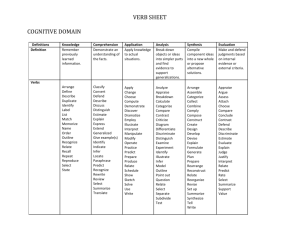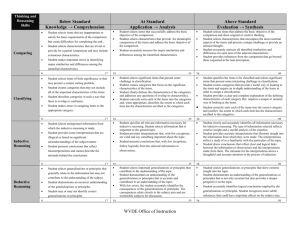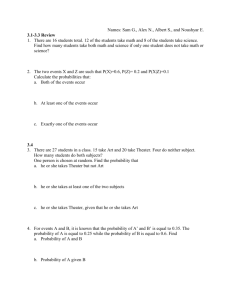Project 3
advertisement
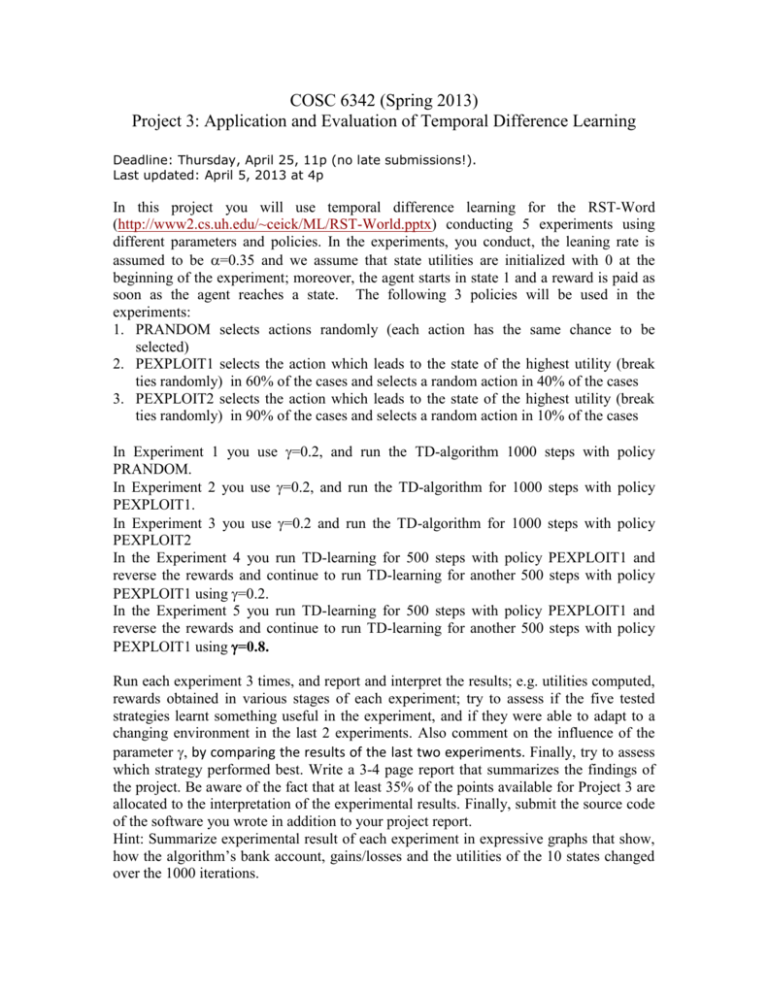
COSC 6342 (Spring 2013) Project 3: Application and Evaluation of Temporal Difference Learning Deadline: Thursday, April 25, 11p (no late submissions!). Last updated: April 5, 2013 at 4p In this project you will use temporal difference learning for the RST-Word (http://www2.cs.uh.edu/~ceick/ML/RST-World.pptx) conducting 5 experiments using different parameters and policies. In the experiments, you conduct, the leaning rate is assumed to be =0.35 and we assume that state utilities are initialized with 0 at the beginning of the experiment; moreover, the agent starts in state 1 and a reward is paid as soon as the agent reaches a state. The following 3 policies will be used in the experiments: 1. PRANDOM selects actions randomly (each action has the same chance to be selected) 2. PEXPLOIT1 selects the action which leads to the state of the highest utility (break ties randomly) in 60% of the cases and selects a random action in 40% of the cases 3. PEXPLOIT2 selects the action which leads to the state of the highest utility (break ties randomly) in 90% of the cases and selects a random action in 10% of the cases In Experiment 1 you use =0.2, and run the TD-algorithm 1000 steps with policy PRANDOM. In Experiment 2 you use =0.2, and run the TD-algorithm for 1000 steps with policy PEXPLOIT1. In Experiment 3 you use =0.2 and run the TD-algorithm for 1000 steps with policy PEXPLOIT2 In the Experiment 4 you run TD-learning for 500 steps with policy PEXPLOIT1 and reverse the rewards and continue to run TD-learning for another 500 steps with policy PEXPLOIT1 using =0.2. In the Experiment 5 you run TD-learning for 500 steps with policy PEXPLOIT1 and reverse the rewards and continue to run TD-learning for another 500 steps with policy PEXPLOIT1 using =0.8. Run each experiment 3 times, and report and interpret the results; e.g. utilities computed, rewards obtained in various stages of each experiment; try to assess if the five tested strategies learnt something useful in the experiment, and if they were able to adapt to a changing environment in the last 2 experiments. Also comment on the influence of the parameter by comparing the results of the last two experiments. Finally, try to assess which strategy performed best. Write a 3-4 page report that summarizes the findings of the project. Be aware of the fact that at least 35% of the points available for Project 3 are allocated to the interpretation of the experimental results. Finally, submit the source code of the software you wrote in addition to your project report. Hint: Summarize experimental result of each experiment in expressive graphs that show, how the algorithm’s bank account, gains/losses and the utilities of the 10 states changed over the 1000 iterations.
